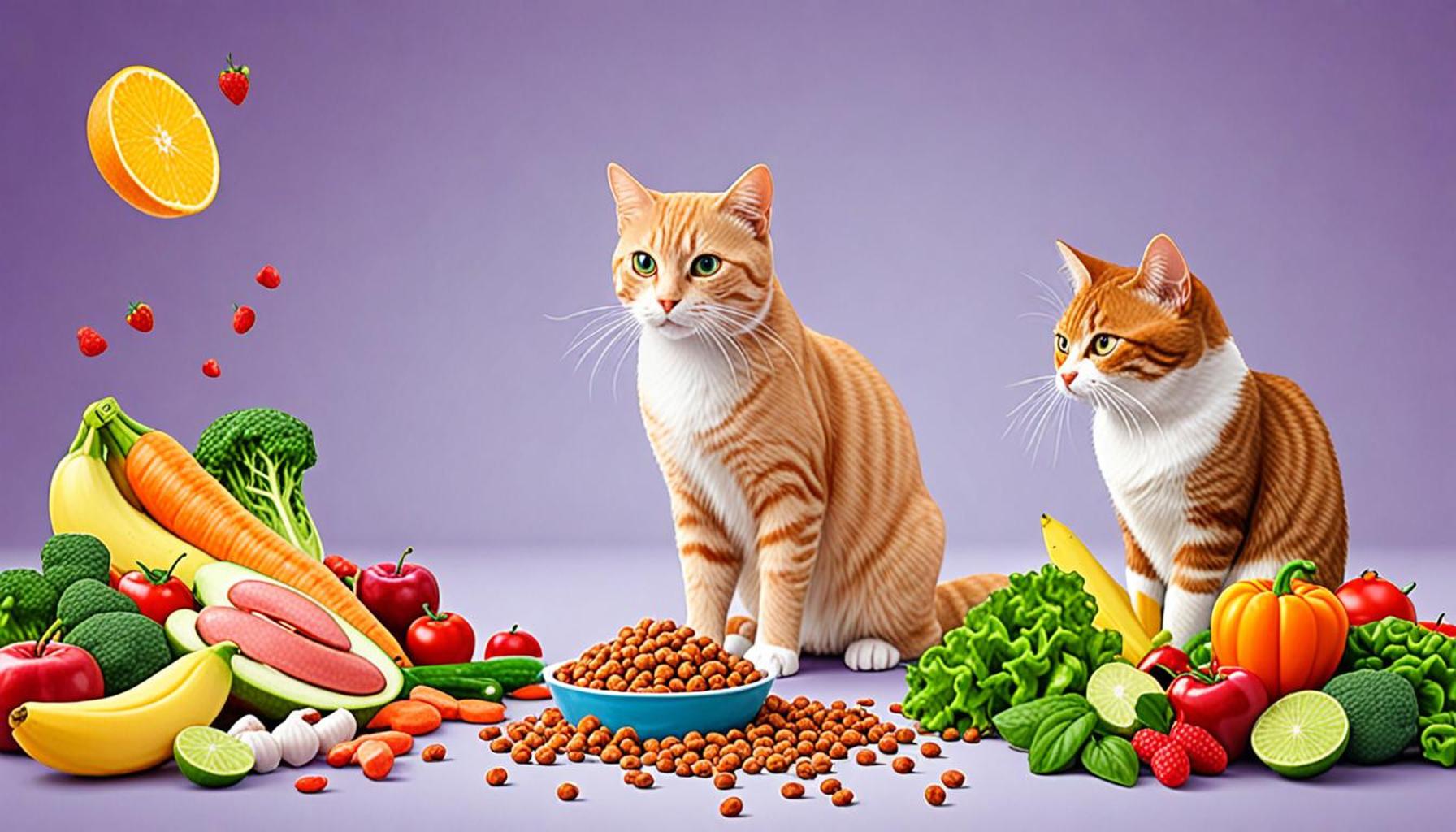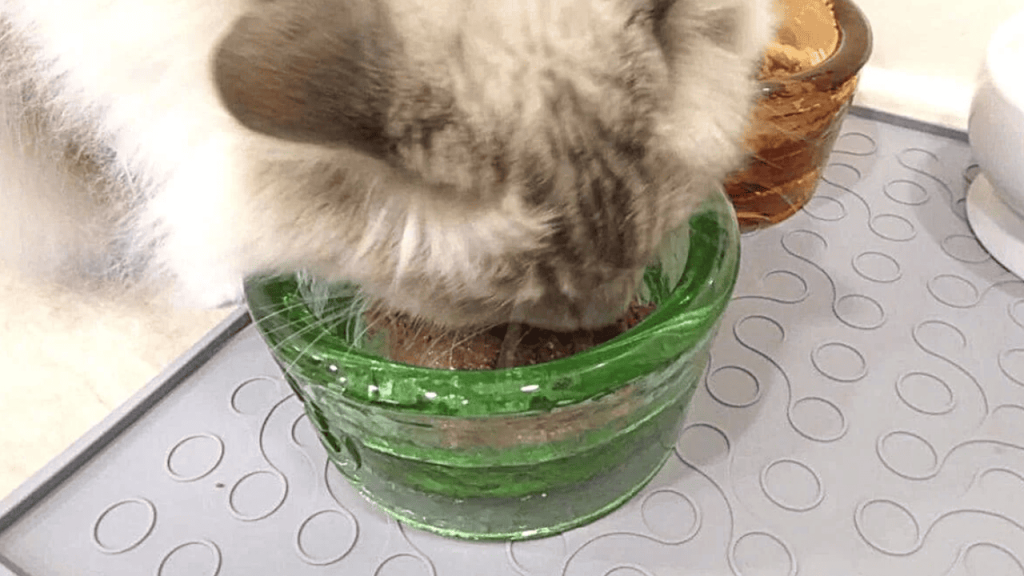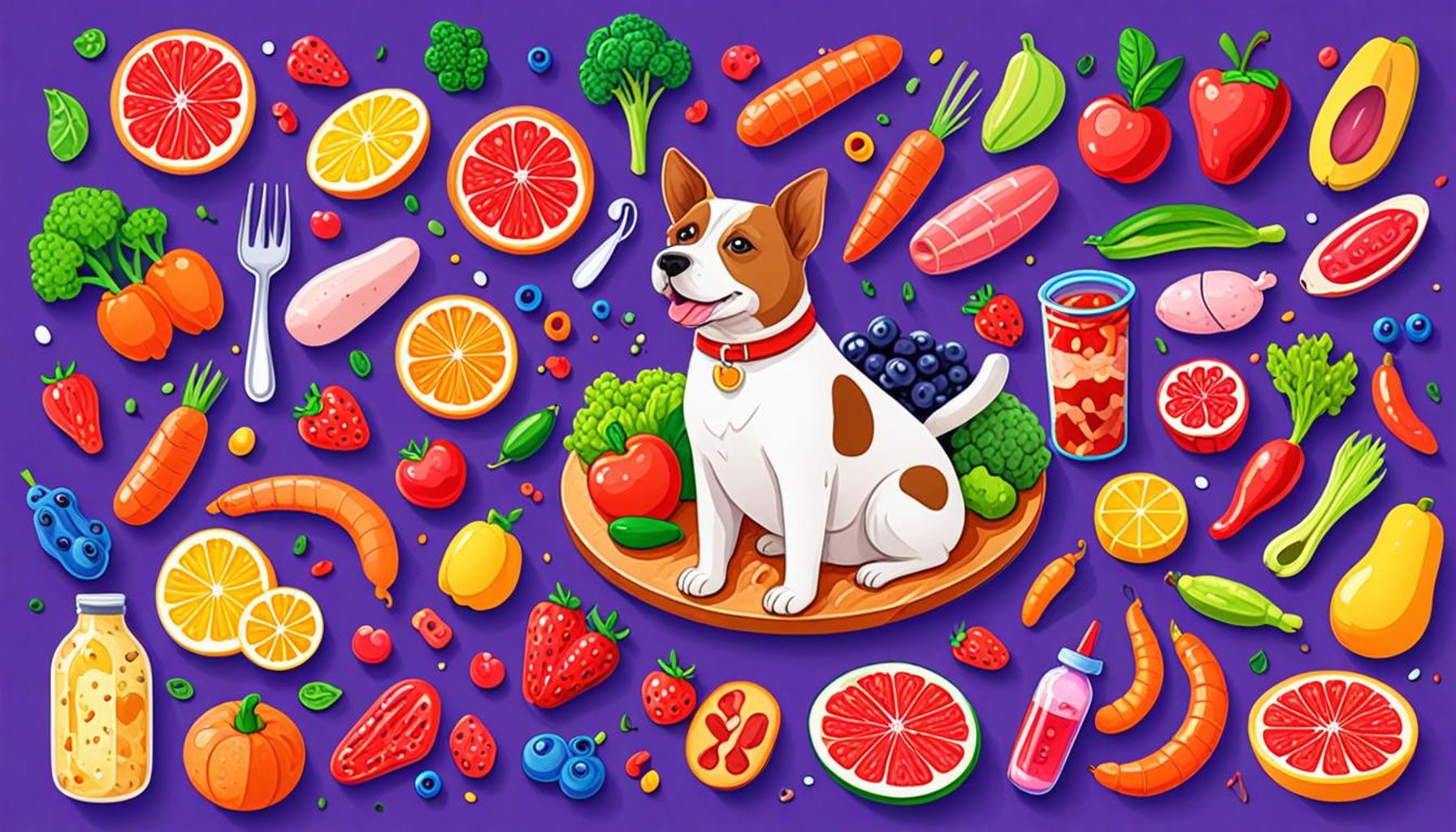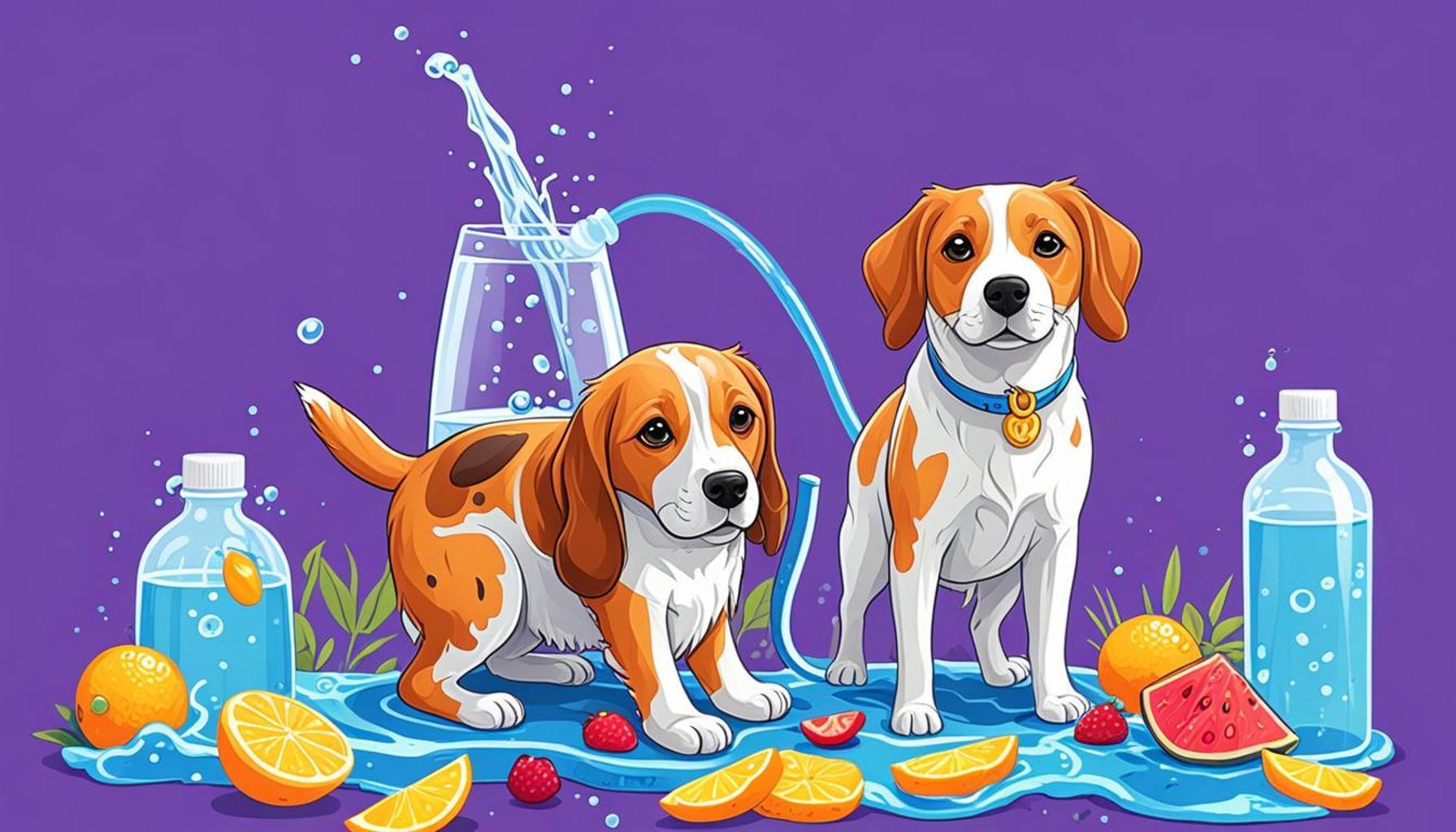Natural Foods vs. Processed Food: What is Better for Your Cat?

The Great Food Debate: Natural vs. Processed
The choice between natural foods and processed food for your cat has sparked substantial dialogue among pet owners and veterinarians alike. As more research unveils the complexities of feline nutrition, understanding what goes into your cat’s food becomes essential. Each option has its unique advantages, and discerning which diet might be best for your cat requires careful consideration and knowledge.
Understanding Natural Foods
Natural cat foods typically comprise whole ingredients that are minimally processed, including fresh meats, vegetables, and whole grains. These diets aim to replicate what cats would eat in the wild, focusing on natural animal sources of protein. This form of nourishment often leads to improved digestion and offers additional benefits, such as lower preservatives and additives.
For example, a diet rich in high-quality proteins like chicken or fish can lead to shinier coats, healthier skin, and more energy. Moreover, these natural ingredients tend to provide essential nutrients in their unprocessed forms, which can be more bioavailable than those found in synthetic additives. However, ensuring that your cat’s nutrition is well-rounded may require more homework on sourcing and preparing these meals correctly.
The Processed Food Option
On the other hand, processed foods, such as dry kibble and canned varieties, offer convenience and accessibility. These products often undergo rigorous quality control measures and include formulations that are scientifically designed to fulfill cats’ nutritional needs. Many processed foods are enhanced with added vitamins and minerals, catering to various life stages and health requirements of cats.
An advantage of processed foods is longevity. For instance, a bag of dry kibble can be stored for a long time without spoiling, making it an excellent choice for busy pet owners. However, it’s paramount to check ingredient labels; while some brands use high-quality ingredients, others may rely on fillers and artificial preservatives, which could harm your cat’s health in the long term.

Nutritional Profiles and Their Impact
Comparatively, nutritional profiles between these diets can vary widely. Natural diets typically contain fewer additives, focusing on wholesome ingredients, while processed options often boast a longer shelf life and more consistent nutrient profiles. It’s crucial for cat owners to familiarize themselves with ingredient labels. Look out for meat listed as the first ingredient for quality assurance and to identify any potentially harmful additives, such as artificial colors or flavors.
Furthermore, consider the health benefits each diet offers. While natural foods may promote better digestive health and energy levels, some processed foods provide balanced nutrition that caters to specific health concerns, such as weight management or sensitive stomachs. Ultimately, your choice may also influence your cat’s weight maintenance and energy levels, as well as their overall well-being.
As more pet owners in the U.S. prioritize the quality of their cats’ diets, the shift towards natural options speaks volumes about changing attitudes towards pet health. Engaging in research and keeping an open mind about both diets can lead you to surprising insights that are sure to benefit your feline companion.
To conclude, your approach regarding your cat’s diet should be informed and intentional. By examining ingredient labels, understanding the health benefits of each diet, and considering the long-term effects on your cat’s health, you’ll be better equipped to make the best choice that aligns with your pet’s specific needs and lifestyle.
DISCOVER MORE: Click here to learn about the vital role of animal adoption organizations
Comparing the Benefits: Natural and Processed Food for Cats
As cat owners navigate the choices available for their pets, it becomes essential to comprehend the myriad of implications surrounding both natural foods and processed food. Each option carries its own set of consequences for your feline’s health, behavior, and overall quality of life.
The Appeal of Natural Foods
Natural cat foods, often characterized by their high-quality, whole ingredients, typically prioritize fresh origins such as real meat, fish, and a blend of vegetables and whole grains. These diets are designed to mimic what a cat would consume in the wild, focusing heavily on protein sources that are crucial for feline development and energy. Pet nutritionists argue that the closer the food is to its original state, the more nutritional benefits it can provide.
The potential advantages of a natural diet include:
- Improved digestion from whole food ingredients.
- Decreased allergic reactions due to fewer artificial additives.
- Healthier skin and coat resulting from high-quality fats and essential fatty acids.
- Increased energy levels, as natural foods are typically more palatable and digestible.
Additionally, many natural food proponents believe that a diet devoid of synthetic preservatives and unnecessary fillers can enhance a cat’s long-term health. Nonetheless, it is vital to note the challenge of ensuring a balanced diet through natural food, which may require additional planning and potentially more time-consuming preparation methods.
The Role of Processed Food
Contrasting with their natural counterparts, processed cat foods like kibble and canned offerings provide a level of convenience that is difficult to overlook. For busy pet owners, these options are not only readily available but also engineered to meet the specific nutritional requirements of cats. Many processed brands conduct extensive research and testing to ensure their formulations are scientifically backed.
Notable benefits of processed food include:
- Consistency in nutrient profiles, making it easier to plan meals.
- Longer shelf life, allowing for easier inventory and less waste.
- Accessibility in various formulations, addressing special health concerns like renal issues or weight management.
However, not all processed cat foods are created equal. Some may contain low-quality ingredients laden with fillers, artificial colors, and preservatives. This emphasizes the importance of examining ingredient lists for key indicators of quality such as recognizable whole meats and clarity in sourcing. Without careful evaluation, processed foods can unintentionally lead to health issues over time.
Balancing Choices for Your Cat
Ultimately, the selection of either natural or processed foods hinges not just on the ingredients but also on the unique requirements of your cat. Factors such as age, activity level, and health concerns should weigh heavily on the decision. Many pet owners are finding success by blending the two options; integrating natural ingredients into processed diets can yield a balanced approach that harnesses the benefits of both sides. As dietary trends evolve and knowledge expands, keeping an informed and adaptable mindset will ensure that you provide the best for your furry companion.
| Advantages of Natural Foods | Advantages of Processed Foods |
|---|---|
| High Nutritional Value | Convenience |
| Natural foods often contain higher levels of vital nutrients, vitamins, and minerals, essential for your cat’s health. | Processed foods are easy to store and serve, making feeding time quicker and less complicated for busy cat owners. |
| Lower Chemical Additives | Cost-Effective |
| Natural foods usually have fewer artificial additives and preservatives, leading to better overall health. | Processed foods can be more affordable, which is attractive for budget-conscious pet owners. |
| Better Digestibility | Extended Shelf Life |
| Natural ingredients are often easier for cats to digest, promoting better gastrointestinal health. | Processed foods typically have a longer shelf life, reducing waste. |
Understanding the differences in nutritional value, digestibility, and ingredient quality is crucial in determining what is better for your feline friend. Natural foods offer several advantages, including higher nutritional density and fewer artificial ingredients. However, processed foods provide convenience and cost-effectiveness that many pet owners find appealing. Each option has its place, making it essential to consider your cat’s unique health needs and lifestyle when making feeding decisions. Explore further into how these dietary choices impact feline well-being and behavior to make informed choices for your cat.
DIVE DEEPER: Click here to learn more about nutrition for your pets
Understanding Nutritional Needs and Lifestyle Considerations
When delving deeper into the debate of natural foods vs. processed food, it is crucial to consider the various nutritional needs of cats. Cats are obligate carnivores, meaning their bodies have evolved to obtain nutrients primarily from animal sources. Therefore, whether one opts for natural or processed options, it’s imperative that the chosen diet delivers sufficient protein and essential nutrients for optimal health.
The Importance of Tailoring Diets
Your cat’s individual characteristics play an essential role in determining their dietary needs. For example, a growing kitten has vastly different nutritional requirements than a sedentary senior cat. In fact, a study published in the Journal of Animal Science noted that older cats often benefit from higher protein intake to maintain muscle mass and overall vitality. Consequently, understanding the specific life stage of your cat will aid in making an informed decision about their food.
Additionally, certain breeds may even lean towards predispositions for various dietary sensitivities or health issues. For instance, Maine Coons may be prone to heart conditions, and cats like Siamese may develop gastrointestinal sensitivities. These breed-specific considerations may prompt owners to scrutinize ingredients carefully or choose specialized diets that cater to their cat’s unique needs.
Analyzing Ingredient Quality
While it’s tempting to focus solely on the type of food (natural or processed), a critical element in this decision is the quality of the ingredients. In fact, the Association of American Feed Control Officials (AAFCO) provides guidelines ensuring the minimum nutritional adequacy of both natural and processed foods. However, not all products adhere equally to these standards, which means attentive consumers should look for brands that prioritize ingredient transparency and high standards in sourcing.
When reading labels, look for real meats and recognizable ingredients, as well as a clear sources list free of ambiguous terms like “meat by-products.” Diets species-specific to felines should rely on quality protein sources as the cornerstone rather than fillers such as corn, soy, or unidentified animal parts. For example, a product that lists “chicken” as the primary ingredient is preferable over one that suggests “animal meal” or “grain-based.”
Exploring Additional Options: Raw and Home-Cooked Diets
The discourse on natural versus processed food also opens the door to alternative feeding practices like raw and home-cooked diets. Raw diets, often rich in fresh meat, organ meats, and bones, are marketed for their potential health benefits, including improved digestion and dental health. However, it is crucial for pet owners to educate themselves about food safety and balanced nutrition when considering this route.
Similarly, home-cooked diets can provide greater control over ingredients and allow customization according to specific health needs, but require significant planning and nutritional knowledge. In fact, research highlights that many homemade diets fail to deliver complete and balanced nutrition unless crafted with precisión.
As you explore these varied pathways, remember that consulting with a veterinarian or a certified pet nutritionist can provide valuable insights tailored to your cat’s specific needs. Ultimately, navigating the options between natural foods and processed food requires careful consideration, like dissecting the ingredient quality, a cat’s individual requirements, and culinary preferences to arrive at an optimal solution for your beloved feline friend.
DISCOVER MORE: Click here to learn about balanced nutrition for your pet’s health</p
Final Thoughts on Nourishing Your Feline Friend
The debate between natural foods and processed food for cats is not merely a matter of preference; it is a complex consideration that involves understanding your cat’s unique nutritional needs, lifestyle, and health conditions. As the evidence suggests, both types of food can play a role in your cat’s diet, but the key lies in the quality of ingredients and how they align with your pet’s specific requirements.
As you ponder the ideal diet for your feline companion, remember that tailoring their nourishment to individual traits, such as age, breed, and sensitivities is essential. A diet rich in high-quality, identifiable protein sources should take precedence over fillers and ambiguous ingredients, regardless of whether you choose natural or processed options. Additionally, explore alternative feeding avenues like raw or home-cooked diets, which can offer further customization but require informed planning and preparation.
Navigating these choices can be overwhelming, and thus consulting with a veterinarian or a certified pet nutritionist can provide much-needed guidance to ensure your cat’s nutritional needs are met comprehensively. Ultimately, the goal is to foster a healthy, happy feline that benefits from a well-balanced diet suited to their unique lifestyle—be it natural or processed. As you make your decision, prioritize researching credible brands and understanding labels to give your beloved cat the best possible nutrition for a thriving life.


